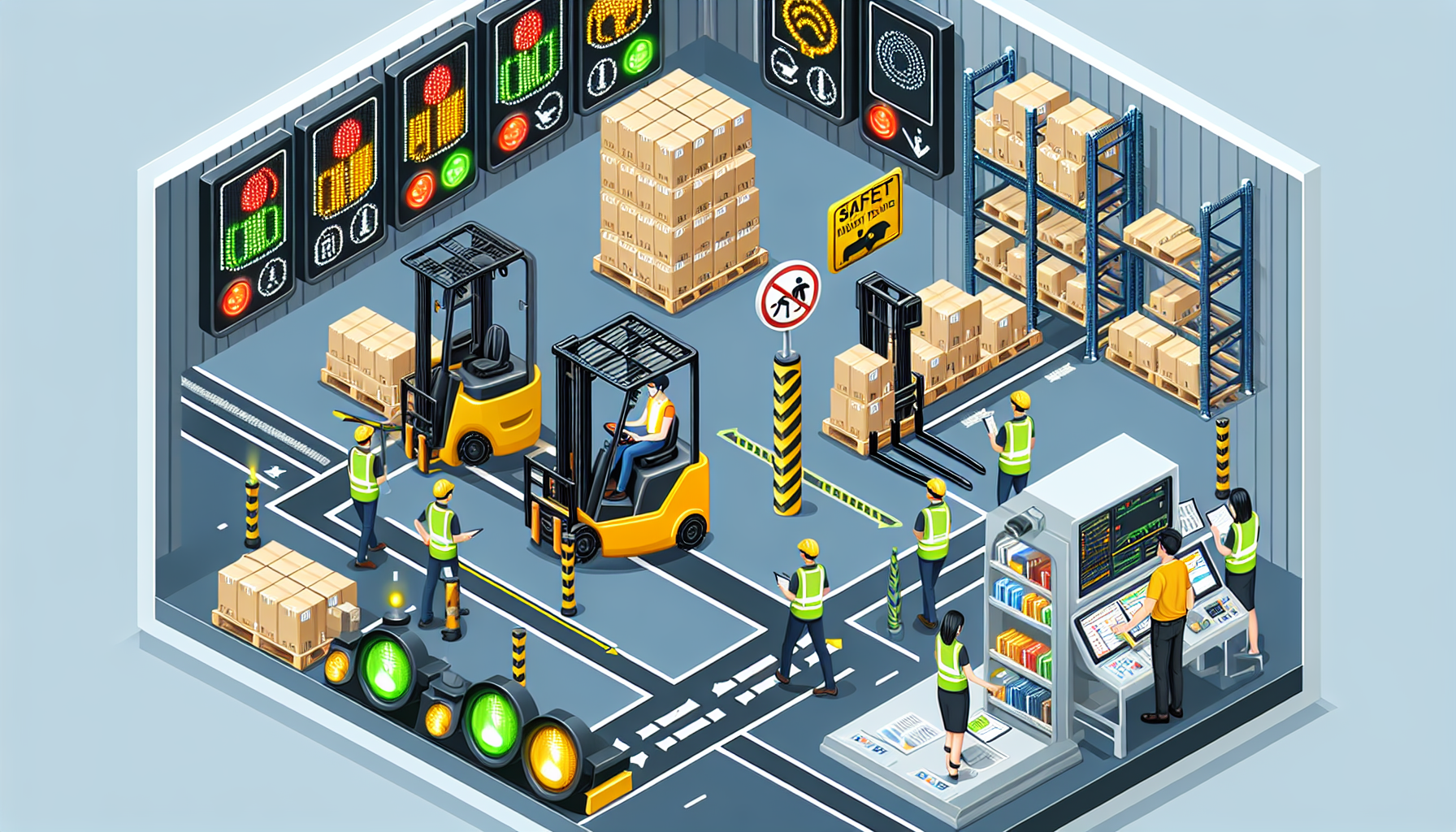Forklifts are a crucial piece of equipment when it comes to warehouse operations. They allow for the efficient movement and transportation of heavy loads, saving time and effort. However, forklifts can also pose significant risks, especially in high-traffic areas within the warehouse. In order to ensure the safety of both forklift operators and other employees working in the vicinity, it is essential to implement proper measures and guidelines for forklift safety.
The Importance of Forklift Safety in High-Traffic Areas
In high-traffic areas of the warehouse, where forklifts and pedestrians intersect, the potential for accidents and injuries is higher. Forklifts, due to their size and weight, have limited visibility, which can result in collisions with people and objects if proper precautions are not taken. In addition, the speed and maneuverability of forklifts make it necessary to establish clear guidelines to minimize the risk of accidents.
Implementing forklift safety measures in high-traffic areas is vital for several reasons:
- Employee Safety: The safety of employees should be the top priority for any warehouse operation. By implementing forklift safety measures in high-traffic areas, the risk of accidents and injuries can be greatly reduced.
- Productivity: Accidents and injuries not only have a direct impact on employee well-being but can also lead to disruptions in operations. By prioritizing forklift safety, productivity can be maintained and downtime can be minimized.
- Legal Compliance: Failure to implement proper forklift safety measures can result in legal consequences and financial liabilities for a warehouse. Compliance with Occupational Safety and Health Administration (OSHA) regulations is essential.
Best Practices for Forklift Safety in High-Traffic Areas
To ensure forklift safety in high-traffic areas, the following best practices should be implemented:
- Designated walkways: Clearly marked walkways separate from forklift traffic help pedestrians identify safe areas to walk. These designated paths should be well-lit and easily identifiable.
- Physical barriers: Physical barriers, such as guardrails or barriers, can help separate forklifts from pedestrians, reducing the possibility of accidental collisions. These barriers should be sturdy and visible.
- Speed limits: Implementing speed limits for forklifts in high-traffic areas can help reduce the risk of accidents. Speed limits should be clearly posted and enforced to ensure compliance.
- Signage and signals: Clear signage indicating forklift traffic and pedestrian-only areas can provide visual guidance for all individuals in the warehouse. Additionally, audible signals, such as alarms or horns, should be used to alert pedestrians to the presence of forklifts.
- Training and certification: All forklift operators should receive comprehensive training and certification to ensure they are aware of and follow proper safety protocols. Regular refresher courses can help reinforce safe practices.
It is also crucial to conduct regular warehouse safety evaluations to identify potential hazards and implement necessary improvements. HCO Innovations offers a comprehensive warehouse safety evaluation service that can help assess the effectiveness of current safety measures and provide recommendations for enhancing forklift safety in high-traffic areas.
Conclusion
Prioritizing forklift safety in high-traffic areas is essential for maintaining a safe and efficient warehouse operation. By implementing designated walkways, physical barriers, speed limits, signage, and providing proper training to forklift operators, the risk of accidents can be significantly reduced. Regular safety evaluations and improvements are key to ensuring forklift safety in high-traffic areas. Remember, the safety of employees should always be the top priority.

